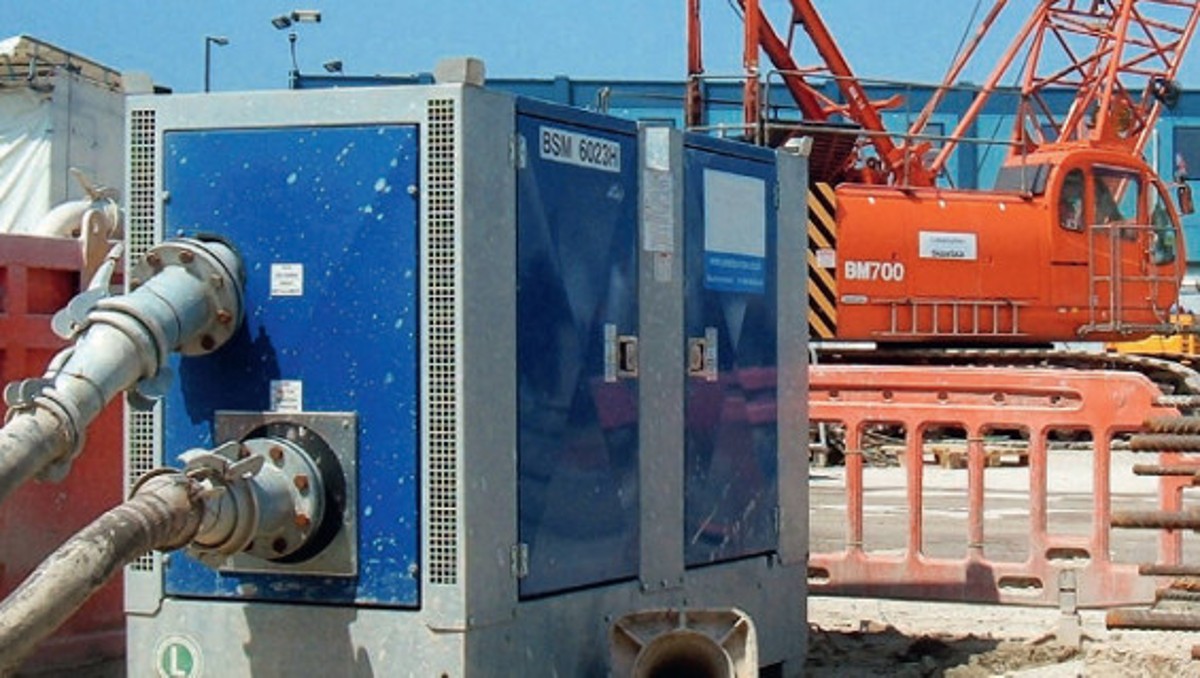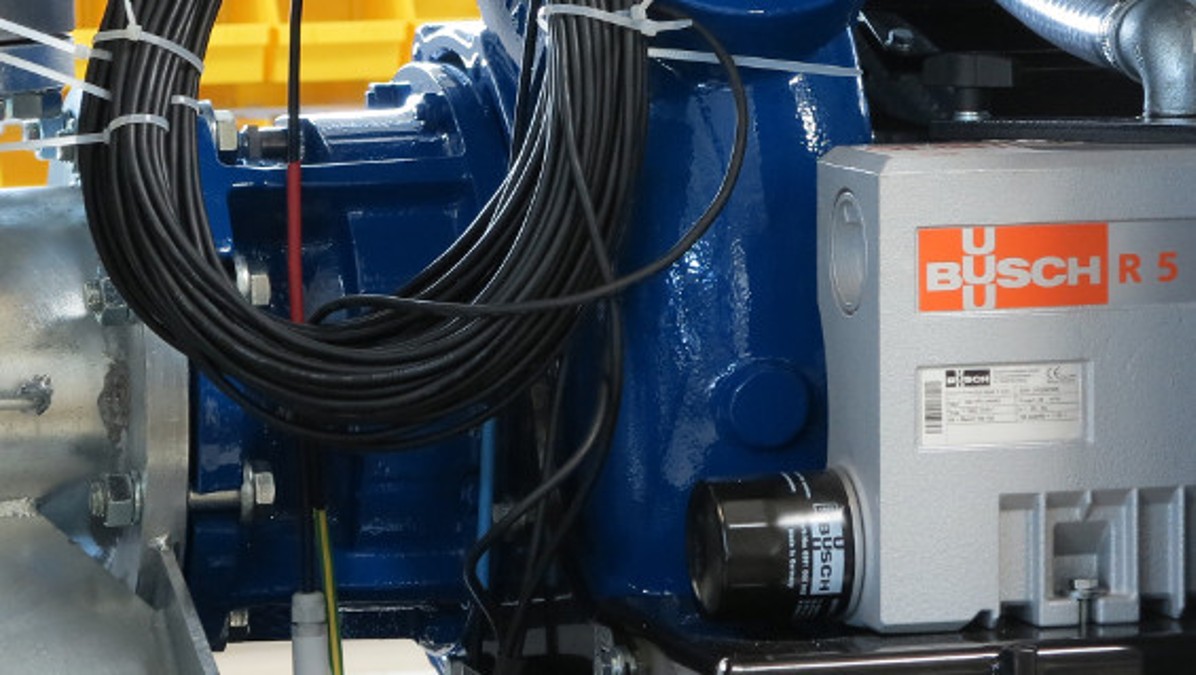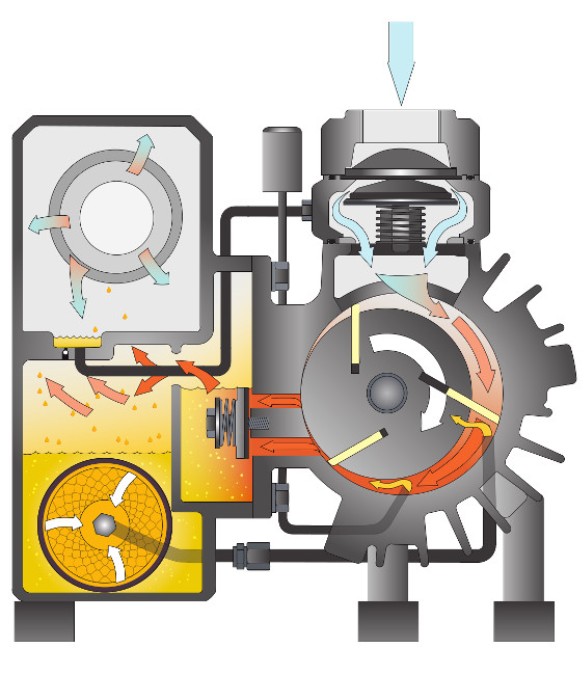Self-priming Pump Systems with Robust Vacuum Technology from Busch
Pannon-Hidrostal Kft.
Maulburg, Germany
|
19.02.2018
|
4 min
The company Pannon-Hidrostal Kft. in Nyúl, Hungary, manufactures mobile pump systems for pumping out waste water or ground water. The pump systems are supplied as compact and mobile units complete with screw centrifugal pump, diesel engine drive and soundproof housing. The self-priming units each have a
Busch R 5 rotary vane vacuum pump integrated in them, which draws in the water at the start of the pumping process.
Hidrostal
For more than 60 years Hidrostal has been manufacturing pump systems at several locations around the world for numerous industrial fields, with a focus on applications in the area of waste water. The Pannon-Hidrostal Kft. plant with its 45 employees has been producing different pump systems in Hungary for 25 years. One production area concentrates on the "SuperBetsy" mobile pump systems (Fig. 1), which are mainly used to pump out waste water or dirty water during the drainage of mines or other drainage channels, for the lowering of ground water, the redirection of sewers or for flood protection.
A highly efficient screw centrifugal pump ensures high suction capacity with low energy consumption.
As there are no moving parts in the inlet chamber, these pump systems are resistant to blockages and are therefore perfect for waste water with a large proportion of solid particles. "SuperBetsy" pump systems are available in seven different sizes with suction capacities ranging from 360 to 2000 cubic metres of water per hour.
Busch
R 5 rotary vane vacuum pumps (Fig. 2) are used to draw in the water when the pump system is started. These are connected to the diesel engine with a V-belt.
- This means that when the engine is switched on, the vacuum pump begins to draw in the air from the intake pipe up to a closed ball check valve.
- Due to the vacuum in the intake pipe, the water rises up to the ball check valve.
- As soon as the water level has reached the ball check valve, the internal control opens the valve, starts the centrifugal pump and switches off the vacuum pump.
- If the water level in the intake pipe drops below a certain level during operation, the vacuum pump switches on again.
- The electronically controlled "BetsyPrime" suction system runs extremely efficiently and only operates the vacuum pump when this is required for the initial vacuum or in the event of a dropping water level in the intake pipe.
Depending on the suction capacity of the pump systems and the diameter of the intake pipes, different sizes of R 5 rotary vane vacuum pumps are used, from a pumping speed of 40 to 100 cubic metres per hour. The one thing they all have in common is that they are driven by the diesel engine via V-belts.
During the development of the "SuperBetsy" pump systems, at Hidrostal they chose the
rotary vane vacuum technology from Busch because it is
extremely robust and reliable. Furthermore, the R 5 rotary vane vacuum pumps allow a
higher vacuum level to be reached than with other technology, such as ejectors.
This has the advantage that water can be drawn in from a depth of up to seven metres – something which expands the application area of the "SuperBetsy" pump systems considerably.
R 5 rotary vane vacuum pumps (Fig. 3) have internal oil circulation.
The oil lubricates the moving parts, seals these against each other and therefore contributes to the high vacuum performance.
The oil also dissipates the compression heat. The oil separator, which is integrated as standard, separates the oil from the extracted air, which can then be discharged free from oil. The intake air is compressed in the crescent-shaped spaces within the vacuum pump, where the air is closed in between two vanes, compressed, and discharged into the oil separator. This is a process which is repeated 4,500 times a minute through the rotary motion and the number of vanes. Moisture which is also drawn in is conveyed through the vacuum pump as a vapour due to a gas ballast valve, meaning that water cannot combine with the oil and the vacuum pump does not become damaged in the long term.
CEO János Vigh is extremely satisfied with this technical solution because he knows that he is producing
high-quality and reliable units with his "SuperBetsy" pump systems – units which are often used in sensitive and difficult situations; for example, during floods. Here, he must be able to completely rely on the installed vacuum pumps.
With Busch, he knows that he is in good hands – and not only technically; Pannon-Hidrostal is supported directly by Busch locally through the Hungarian sales company Busch Hungary. With its global network of 60 companies in 42 countries, Busch is represented around the globe and is always close by with a service technician in the event of damage or repair.
Maulburg, Germany
|
19.02.2018
|
4 min


